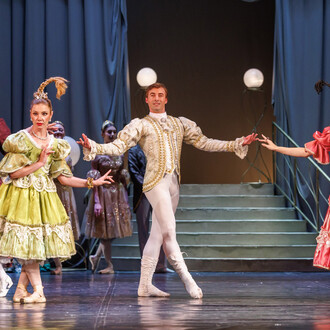The usage of ceramics in architecture founds its origin in the Ancient East, but it was mainly the Islamic world to cover the wall of mosques, mausoleums, Koranic schools and palaces with colored glazed tiles, reaching refined results in the decorations. The lusterware items of 13th – 14th century from Iran, the floral decorated tiles from Iznik (ancient Nicea) in the Ottoman Turkey of 16th – 17th century reach highly refined decorative results.
Later, the positive reception of majolica and glaze coverings spread in Western countries through Spain, where the Hispanic-Moorish stile, embodying the perfect union between Islamic East and Christian West, grew up. The influence of the Moorish Spain also led to the achievement of the lively production of “qallaline” from 17th – 19th century Tunisia.
Beside interesting Spanish pieces of 15th – 16th century, pieces from France of Medieval and Renaissance time, from Holland from 16th to 17th century and a limited but representative selection of stove tiles from Alto Adige, the Western background is completed by a wide-ranging of Italian pieces from Middle Age to contemporary time. Following the examples of the Spanish prototypes, the production of glazed tiles and bricks took root in Italy; in the 15th and 16th century, they covered the floors of chapels, little studios and ceilings of churches. During the 17th and, above all the 18th century they conquered wider and wider surfaces of floors and walls with elaborated modular compositions decorated with wide drawings, especially in Naples and Sicily areas. Such experience greatly increased thanks to the coming into the scene of mechanical implements and industrial processes: after the brilliant Liberty season, at the beginning of the 20th century, the tile exceeded its decorative rule to become an artistic means and support (as happened for Arturo Martini and for the Futurist artists). But it is after the Second World War that a real explosion concerning the industrial production occurred and the tile became a device for the reconstruction and an element of popular diffusion.
The section includes glazed tiles for floor and wall coverings and a few ceramics for architecture (roofing tiles, stove tiles, bricks), or decorative pieces with devotional purposes (panels with figures and landscape). Beside the single works, groups of tiles part of a unique context are settled; they offer a vision of the original floors, in many cases worn and substituted by durable materials such as marble. The choice to place side by side tiles and potteries, testifies the sharing of the same decorative and stylistic patterns over different works.
The double setting of the exhibition, geographic and chronological, allows to focus the technical-stylistic evolution of the tiles along the centuries and to observe the affinity and influences between West and East.















